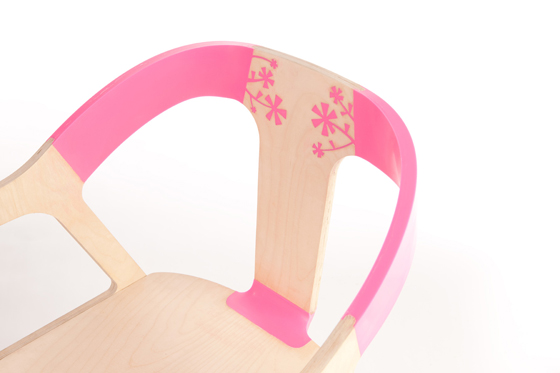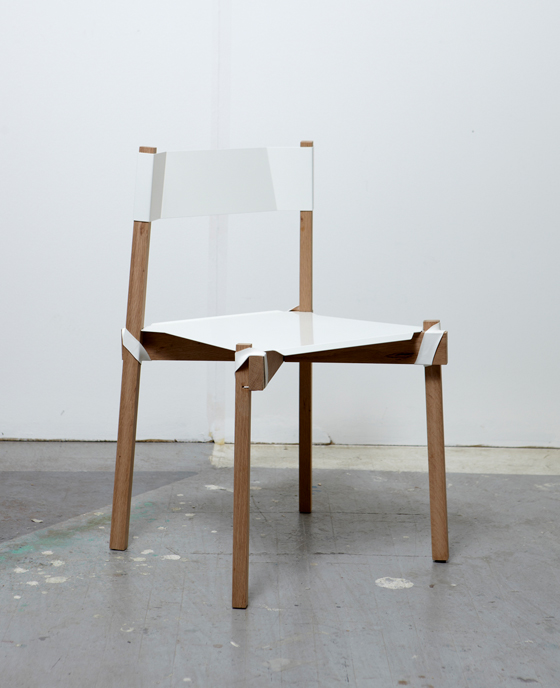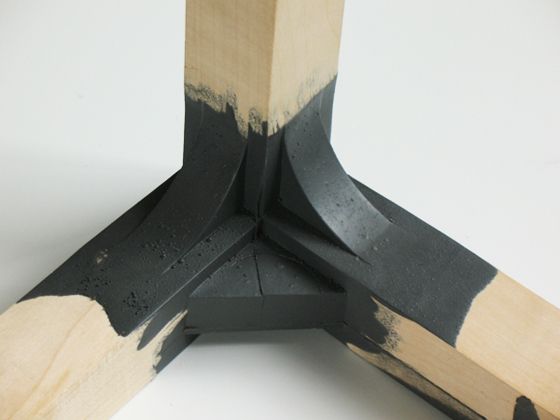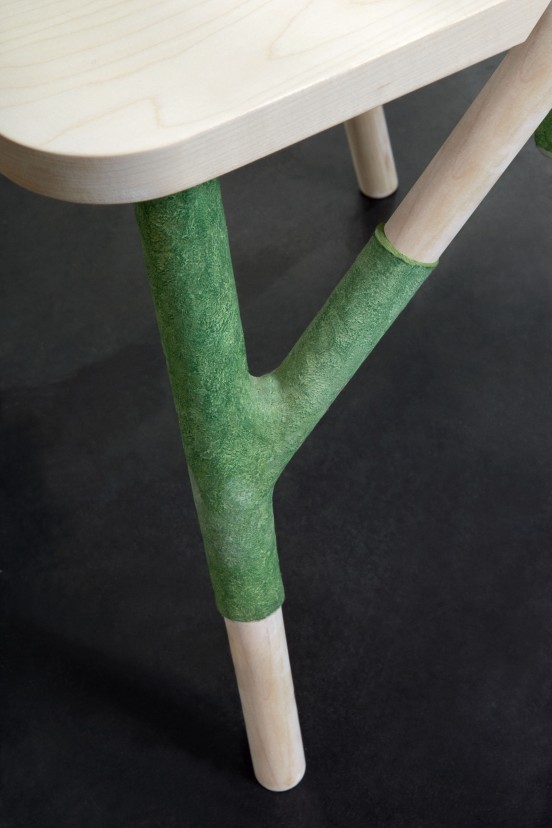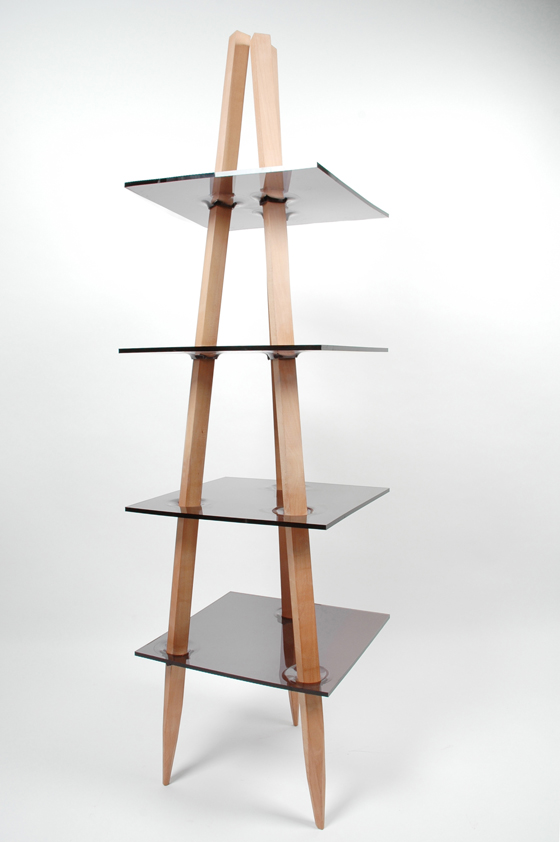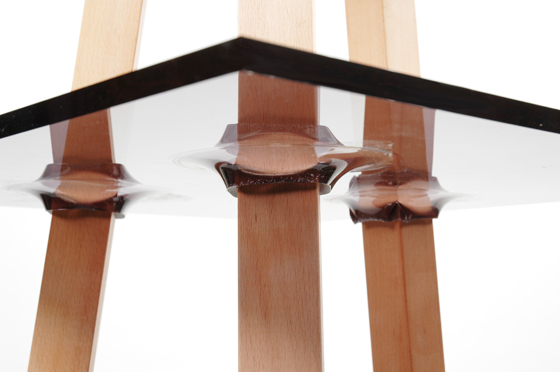Fancy a Joint?: innovative joinery in new furniture design
Text by Simon Keane-Cowell
Zürich, Switzerland
10.07.10
Screws? Glue? Who needs them? With a number of designers developing intriguing new ways of constructing furniture, Architonic takes a look at some examples of recent innovative joinery methods.
There was a time when virtuosity in furniture design reigned supreme. In the history of cabinet-making and working in wood generally, an object's value has often been determined by, among other things, the way its constituent elements have come together. The more integrated and streamlined the joint – for example, the traditional dovetail joint – the greater the perceived level of workmanship. It was all about seamless unity.
'Workshop Chair' by Jerszy Seymour, which uses polycaprolactone wax to join the piece's various components together
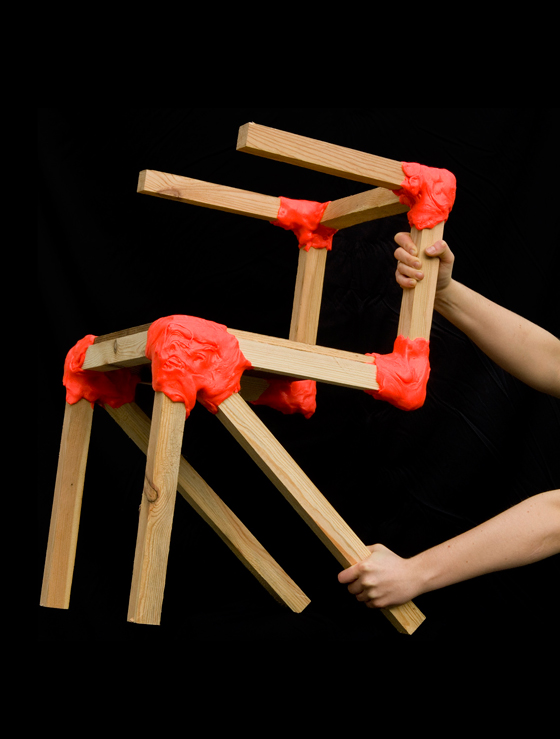
'Workshop Chair' by Jerszy Seymour, which uses polycaprolactone wax to join the piece's various components together
×Modernism of the early 20th century, with its promotion of machine production, dispensed with the idea that furniture should hide the workings of its construction. Seating elements often became visually independent of, and materially different from, the structure on which they rested, and the means of joining the various parts was no longer a matter of concealment and denial.
A number of designers have, of late, been exploring innovative ways of building furniture, some of which make as much of technical statement as they do an aesthetic statement. The whole is, indeed, greater than the sum of its parts when it comes to projects where you can, quite deliberately, see the joins.
The literally titled 'Elastic Wood' chair by Gil Sheffi, one third of Tel Aviv-based design collective Bakery

The literally titled 'Elastic Wood' chair by Gil Sheffi, one third of Tel Aviv-based design collective Bakery
×Detail of 'Elastic Wood' chair by Gil Sheffi of Bakery
The literally titled 'Elastic Wood' chair by young Israeli designer Gil Sheffi, one third of design collective Bakery, kind of gives the game away before you've even seen the piece. Employing a process called 'over-moulding', an elastic material is cleverly used to join together the otherwise flat plywood elements of the chair's sides/legs, seat and backrest, to create an expressive three-dimensional piece. The use of flexible joinery also means a more comfortable experience for the user.
Royal College of Art design graduate Nicola Zacco's 'Shrink' series features heat-shrink plastic as its method of joining each furniture piece's components
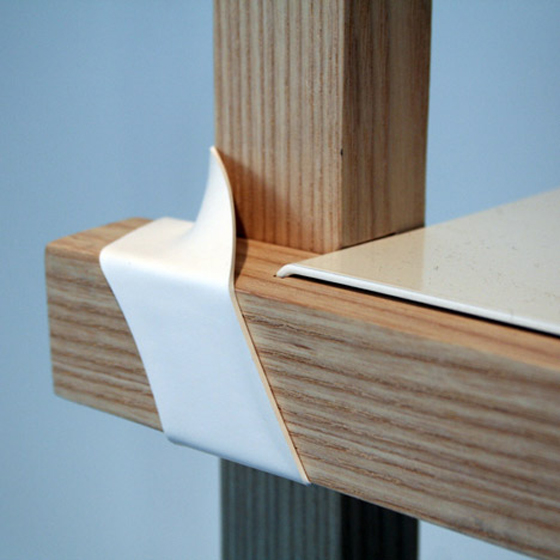
Royal College of Art design graduate Nicola Zacco's 'Shrink' series features heat-shrink plastic as its method of joining each furniture piece's components
×London Royal College of Art graduate Nicola Zocca's 'Shrink' series, shown at this year's degree show, also takes a literal approach to its title. Stunningly simple, her chair, bookcase and side table use heat-shrink plastic, more often used to protect electric cabling, to hold its constituent wooden components. Perfectly rigid joints are formed by wrapping the plastic around them, heating it, and then letting it cool. Hot air really is the only tool that's required. 'I love to keep things as simple as possible and I really enjoy it when a project can express and explain itself without any compromise,' Zocca tells Architonic.
Christof Schmidt's completely new method of joining wood – 'DaR'
'DaR', created by young German designer Christof Schmidt, uses polyurethane foam as a means of joinery
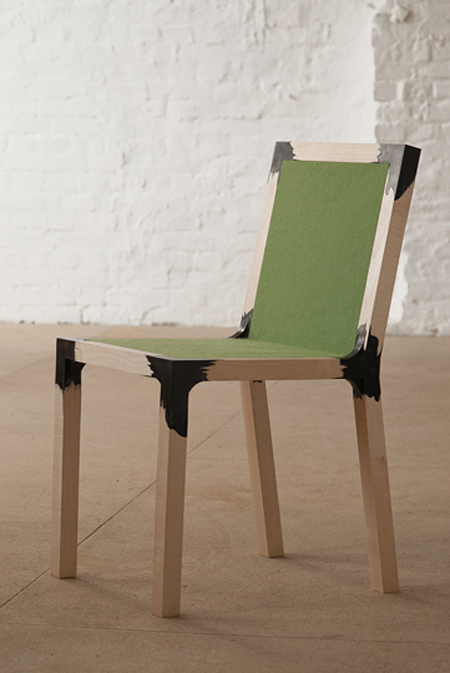
'DaR', created by young German designer Christof Schmidt, uses polyurethane foam as a means of joinery
×Shown at this year's DMY Festival in Berlin, Kasel Kunsthochschule graduate Christof Schmidt's 'DaR' project breaks new ground (and a few pieces of wood). His completely new method for joining wood involves breaking the material to size, then inserting it into a silicone form. Polyurethane foam is introduced, which then expands. The foam gets into the fibres of the wood where it's been broken and, after five minutes, you have a hard, stable joint.
Elise Gabriel's chair from 'The Zelfo Embrace' series, in partnership with TheGreenFactory, which explores the possibilites of using Zelfo, a 100% biodegradable cellulose paste, in furniture design

Elise Gabriel's chair from 'The Zelfo Embrace' series, in partnership with TheGreenFactory, which explores the possibilites of using Zelfo, a 100% biodegradable cellulose paste, in furniture design
×Detail of Elise Gabriel's chair from 'The Zelfo Embrace' series
VIA, the French organisation that has for the past thirty years funded, through its grant scheme, emerging designers who have later become celebrated names, such as Philippe Nigro, Inga Sempé, and before them Erwan and Ronan Bouroullec, can be thanked for supporting the partnership between Elise Gabriel and TheGreenFactory to explore the possibilities of using Zelfo, a 100% biodegradable cellulose paste, in furniture design. The result is 'The Zelfo Embrace' series – a chair, some trestles and a lamp whose form and aesthetics are strange and compelling.
WIS Design's new 'Croquet' series consists of a minimal number of different components and requires no tools for construction
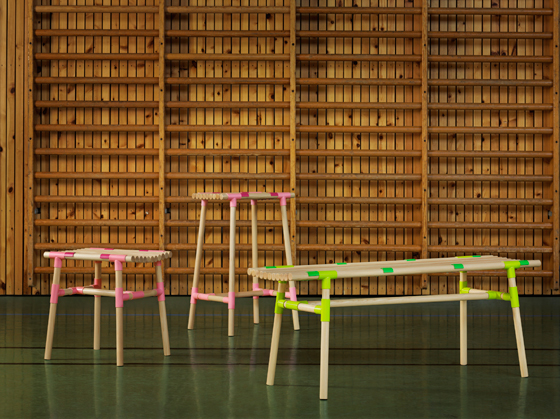
WIS Design's new 'Croquet' series consists of a minimal number of different components and requires no tools for construction
×'Croquet''s joints comprise painted metal elements, which, together with the ash sticks they hold together, are reminiscent of croquet mallets
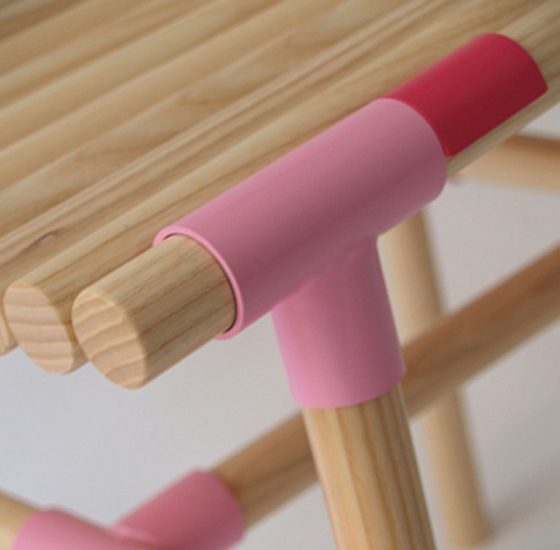
'Croquet''s joints comprise painted metal elements, which, together with the ash sticks they hold together, are reminiscent of croquet mallets
×Perhaps stronger in terms of metaphor than innovation, but nonetheless a celebration of highly visible joinery, is young Swedish practice WIS Design's new 'Croquet' series, which consists of a bench, stool and barstool. Consisting of painted metal, the joints connect wooden (ash) sticks of different lengths, which are reminiscent of croquet mallets. The number of different components is kept to a minimum and the various pieces within the series are easy to assemble, requiring no specific tools.
Underpinning Jerszy Seymour's 'Workshop Chair' is the idea of an 'amateur' society, where we can all participate in the passionate act of creation

Underpinning Jerszy Seymour's 'Workshop Chair' is the idea of an 'amateur' society, where we can all participate in the passionate act of creation
×Berlin-born, London-trained, Milan-based designer Jerszy Seymour has been experimenting with wax as a material for construction for some time now, in the context of his notion of an 'amateur' society, where we are all involved in shaping our world, in being creative. The etymology of the word 'amateur', we are reminded, is 'love', as in to do something for the love of it. As Seymour explains to Architonic, 'the amateur is freedom of libido and instinct from passive consumption to active participation.' The idea of a non-professional, mass participation, or 'social anarchism' as Seymour puts it, finds its latest expression in his 'Workshop Chair', which consists of battens held together with polycaprolactone wax.
Hunn Wai's 'WOOD X PLASTIC' shelf: the two materials are joined by heat alone
Detail from Hunn Wai's innovative 'WOOD X PLASTIC' shelf
Finally, for joinery that (visually speaking) looks like it isn't, look no further than the 'WOOD X PLASTIC' shelf by Singapore-based designer Hunn Wai, who was born in London and trained at Eindhoven. The piece requires no interstitial material to join its two constituent elements of – yes, you've guessed it – wood and plastic. The process goes like this: a small hole is made in the acrylic sheet and is heated for a precise amount of time. The wooden pole is then pushed through the sheet. When the plastic cools down, it contracts around the pole. The result: a super-sturdy and rational structure.
.....


